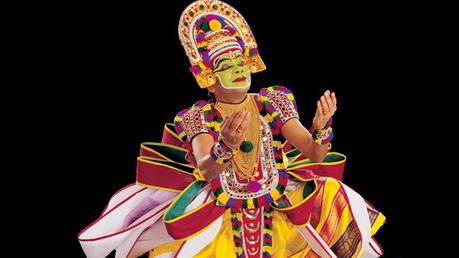 Kerala is one of the richest states in India when it comes to natural beauty,
Kerala is one of the richest states in India when it comes to natural beauty,history and culture. Its history and culture is so rich and its beauty so enchanting that people from all corners of the world comes here to get a slice of its heavenly bliss. It has no comparison and no competitor; it is the uncontested leader in tourism in India, being one of the most visited states, both by domestic and international tourists. One of the distinct aspects of Kerala is its culture, so unique and so rich.
One of the most important and popular aspect of Kerala culture are its art forms, and among the art forms one popular one is Thullal. The world ‘Thullal’ finds it origin in the Dravidian language (which is the language of south India) and it means jumping or ‘to leap about’ or to ‘cut a caper’.
It is known for its simplicity and humor which is quite frank and outspoken. This art form is considered to be a modification of Koothu and is based on the classical principles of Naatya Saastra, which is a treatise of art that originated long back in the 2nd century B.C. The language used in this art form is Malayalam and it employs very simple techniques.
Legend has it that Thullal was started by Kunjan Nambiar who was a very famous poet of Kerala. He used to play drums for Chaakiaars when they used to perform their traditional dance and drama. However when one day he made a mistake in the drums, he was insulted in public by the Chaakiaars.
So the next day to take revenge, he came dressed in an attractive costume, to the place where Chaakiaars was performing and started to sing and dance. People were so attracted by his act that all of them left Chaakiaars and started to watch his performance. This is how the tradition began.
Thullal is basically classified into three types – Ottan Thullal, Seethankan Thullal and Parayan Thullal. This classification is based on meter and rhythm of the songs and also the different costumes worn by the performers. In his performances Kunjan Nambiar took different characters from epics like Ramayana, Mahabharata, Bhaagavatham and Puranas and modified them according to the mores of his society.
This made the art form more exiting and meaningful, and people watched it with great interest. He also used this as a platform to expose the hypocrisy that was prevalent in the society during that time. Being a poet he had mastery over language and used this talent of his to compose beautiful songs that was used for the performance. Even today, after many years Thullal still captures the attention of the people and is very popular.
